
Paro: The Enchanting Gateway to Himalayan Bliss
Explore Paro, Bhutan: A serene valley town offering breathtaking views, ancient monasteries, and a rich cultural heritage, nestled in the heart of the Himalayas.
Nestled in the heart of the Himalayan kingdom of Bhutan, Paro is a charming valley town that offers an idyllic escape into nature and culture. Home to Bhutan's only international airport, Paro serves as the first touchpoint for many travelers, welcoming them with its serene landscapes, traditional architecture, and warm hospitality. The town is surrounded by lush green hills, dotted with sacred monasteries and ancient fortresses, making it a spiritual haven for visitors. One of the must-visit attractions in Paro is the iconic Taktsang Monastery, also known as the Tiger's Nest. Perched precariously on the edge of a cliff, this sacred site provides breathtaking views of the Paro Valley and a glimpse into Bhutan's spiritual heritage. The hike to the monastery is both challenging and rewarding, offering a sense of accomplishment and a deeper connection to the land. Paro's rich history is evident in its well-preserved dzongs, or fortresses, such as the Paro Dzong and the Drukgyel Dzong. These architectural marvels not only serve as administrative and religious centers but also as windows into Bhutan's past. The National Museum of Bhutan, housed in the ancient Ta Dzong, offers further insight into the kingdom's art, culture, and history. A leisurely stroll through Paro's traditional markets and quaint streets will reveal the town's vibrant local life, with colorful handicrafts, aromatic cuisine, and friendly locals adding to its charm.
Local tips in Paro
- Visit the Tiger's Nest early in the morning to avoid crowds and enjoy a peaceful hike.
- Wear comfortable shoes and carry water when exploring the monasteries and dzongs.
- Respect local customs by dressing modestly, especially when visiting religious sites.
- Try traditional Bhutanese dishes like Ema Datshi at local eateries for an authentic culinary experience.
- Opt for a guided tour to gain deeper insights into Paro's history and culture.
Paro: The Enchanting Gateway to Himalayan Bliss
Nestled in the heart of the Himalayan kingdom of Bhutan, Paro is a charming valley town that offers an idyllic escape into nature and culture. Home to Bhutan's only international airport, Paro serves as the first touchpoint for many travelers, welcoming them with its serene landscapes, traditional architecture, and warm hospitality. The town is surrounded by lush green hills, dotted with sacred monasteries and ancient fortresses, making it a spiritual haven for visitors. One of the must-visit attractions in Paro is the iconic Taktsang Monastery, also known as the Tiger's Nest. Perched precariously on the edge of a cliff, this sacred site provides breathtaking views of the Paro Valley and a glimpse into Bhutan's spiritual heritage. The hike to the monastery is both challenging and rewarding, offering a sense of accomplishment and a deeper connection to the land. Paro's rich history is evident in its well-preserved dzongs, or fortresses, such as the Paro Dzong and the Drukgyel Dzong. These architectural marvels not only serve as administrative and religious centers but also as windows into Bhutan's past. The National Museum of Bhutan, housed in the ancient Ta Dzong, offers further insight into the kingdom's art, culture, and history. A leisurely stroll through Paro's traditional markets and quaint streets will reveal the town's vibrant local life, with colorful handicrafts, aromatic cuisine, and friendly locals adding to its charm.
When is the best time to go to Paro?
Iconic landmarks you can’t miss
Buddha Dordenma Statue སྟོན་པ་རྡོར་གདན་མ།
Explore the grandeur of Buddha Dordenma Statue in Thimphu, a breathtaking spiritual landmark and cultural treasure of Bhutan.
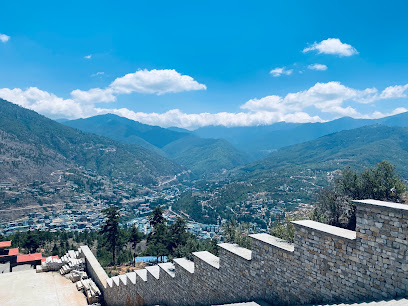
Paro Taktsang
Experience the breathtaking heights of Paro Taktsang, a serene Buddhist monastery perched on a cliff, offering stunning views and spiritual tranquility in Bhutan.
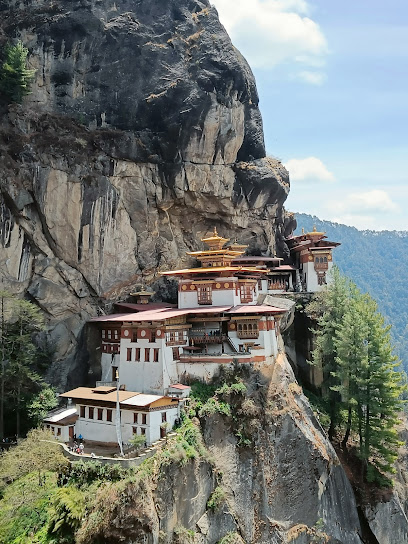
National Museum of Bhutan འབྲུག་གི་འགྲེམས་སྟོན་ཁང་།
Experience the rich cultural heritage of Bhutan at the National Museum, where history, art, and breathtaking views converge.

National Memorial Chhorten རྒྱལ་ཡོངས་རྗེས་དྲན་མཆོད་རྟེན།
Explore the National Memorial Chhorten, a spiritual and architectural gem in Thimphu, embodying the essence of Bhutanese culture and tranquility.
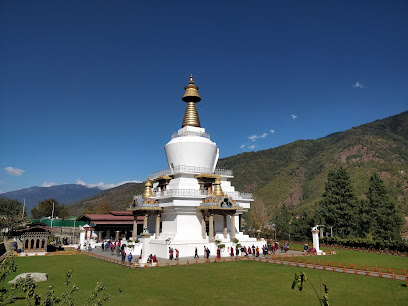
Paro International Airport
Experience the stunning entryway to Bhutan at Paro International Airport, where breathtaking scenery meets rich cultural heritage.
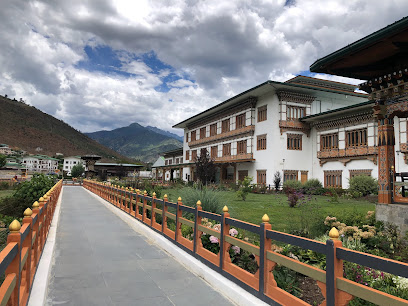
Simply Bhutan
Explore the essence of Bhutanese culture at Simply Bhutan, a heritage museum filled with immersive experiences and traditional artistry.
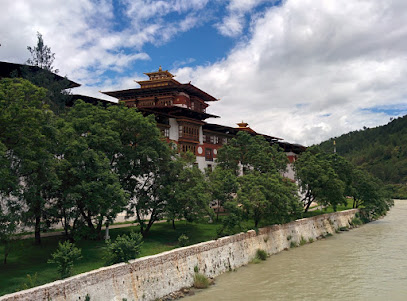
View Point and Shed, Chele La
Discover the stunning vistas and serene landscapes at Chele La Pass, one of Bhutan's highest and most breathtaking mountain passes.
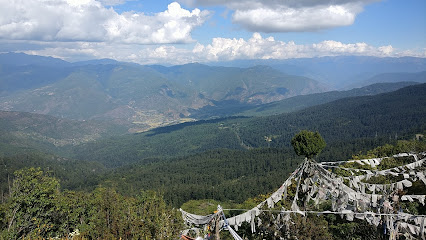
Folk Heritage Museum Kawajangsa
Explore Bhutan's cultural heritage at Folk Heritage Museum Kawajangsa, where history and tradition come together in a captivating experience.
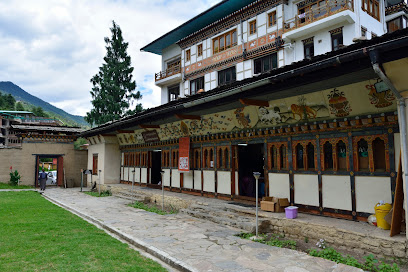
Mountain Cafe - Paro
Experience the perfect blend of local flavors and fusion cuisine at Mountain Cafe in the heart of Paro, Bhutan.
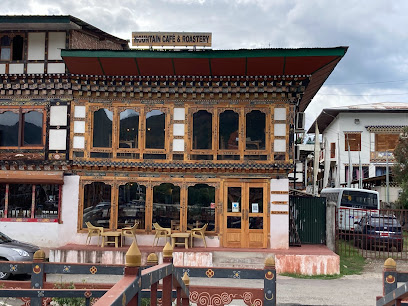
Rinpung Dzong རིན་སྤུང་རྫོང་།
Discover the breathtaking Rinpung Dzong, a stunning fortress-monastery in Paro that showcases Bhutan's unique architectural and spiritual heritage.
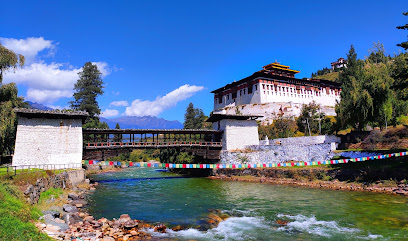
Simtokha Dzong སེམས་རྟོགས་ཁ་རྫོང་།
Discover the historical grandeur and serene beauty of Simtokha Dzong, a fortress that embodies Bhutan's rich cultural heritage and stunning landscapes.
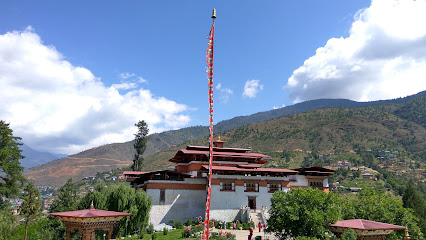
Chele La
Experience the breathtaking beauty of Chele La, Bhutan's highest mountain pass, adorned with prayer flags and stunning Himalayan views.
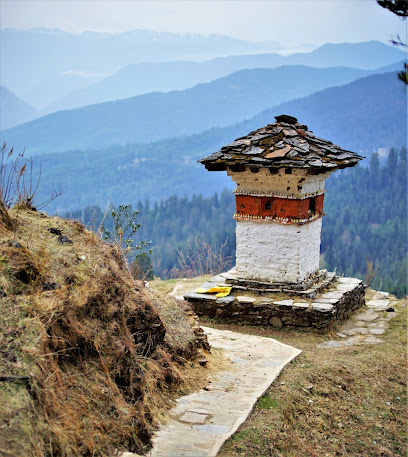
Paro Airport Bird's Eye View Point
Discover the stunning beauty of Bhutan at the Paro Airport Bird's Eye View Point, where breathtaking Himalayan views await every traveler.
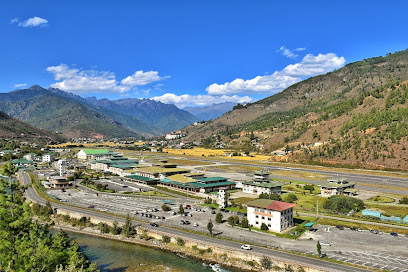
Hotel Khamsum
Discover comfort and warmth at Hotel Khamsum, your ideal base for exploring the vibrant culture and breathtaking landscapes of Paro, Bhutan.

Rema Resort
Discover the serenity of Rema Resort in Paro, Bhutan, where natural beauty meets traditional hospitality for an unforgettable escape.

Unmissable attractions to see
National Museum of Bhutan འབྲུག་གི་འགྲེམས་སྟོན་ཁང་།
Explore the National Museum of Bhutan for a captivating journey through the country's rich culture and history in the stunning Paro Valley.
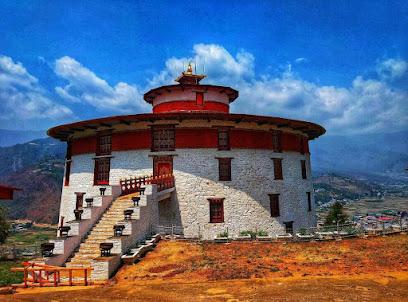
National Memorial Chorten རྒྱལ་ཡོངས་རྗེས་དྲན་མཆོད་རྟེན།
Explore the spiritual heart of Bhutan at the National Memorial Chorten, a stunning stupa filled with rich cultural significance and serene beauty.
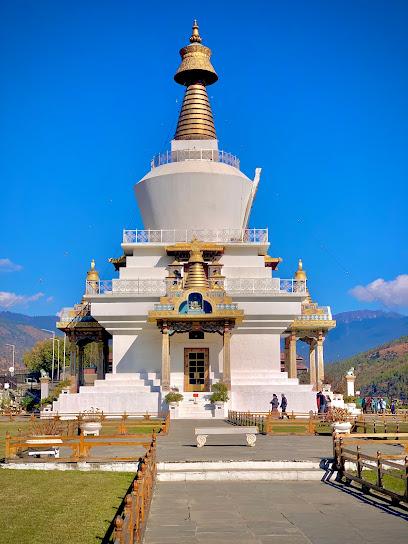
Punakha Dzong སྤུ་ན་ཁ་རྫོང་།
Explore the serene beauty and cultural significance of Punakha Dzong, a stunning fortress and monastery in the heart of Bhutan.
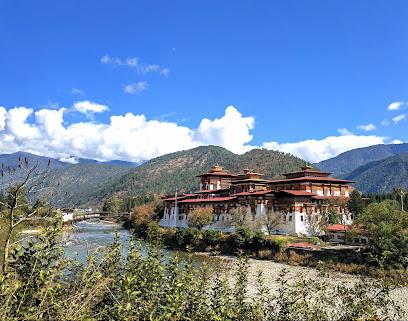
Suspension Bridge, Punakha
Experience breathtaking views and cultural significance at the Suspension Bridge in Punakha, one of Bhutan's longest and most iconic landmarks.
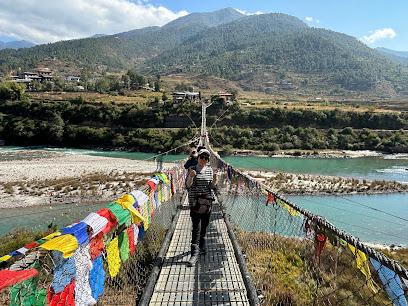
Royal Takin Preserve
Explore the Royal Takin Preserve, a serene nature haven in Bhutan, dedicated to the conservation of the majestic Takin and its breathtaking landscapes.
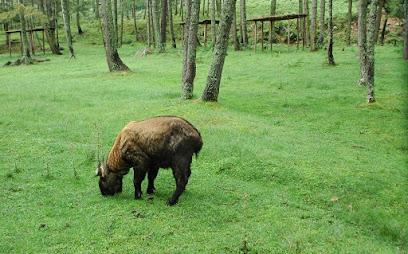
Simply Bhutan
Immerse yourself in the rich culture and traditions of Bhutan at Simply Bhutan, a heritage museum showcasing the heart of Bhutanese life.

Folk Heritage Museum Kawajangsa
Explore the Folk Heritage Museum in Thimphu for an immersive journey into Bhutanese culture and traditions, showcasing rural life and artisanal skills.
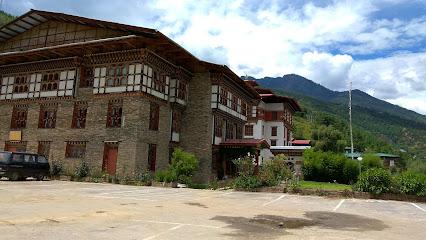
Simtokha Dzong སེམས་རྟོགས་ཁ་རྫོང་།
Explore the architectural wonder of Simtokha Dzong, a historic fortress in Bhutan, rich in culture, spirituality, and breathtaking views.
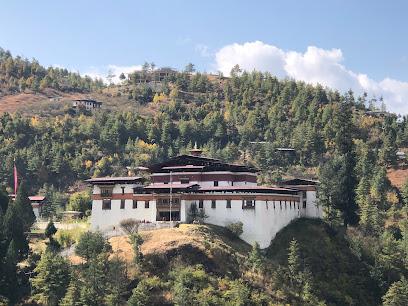
Royal Textile Academy རྒྱལ་འཛིན་ཐག་རིག་སློབ་སྡེ།
Explore Bhutan's rich textile heritage at the Royal Textile Academy, where tradition meets artistry in stunning woven masterpieces.
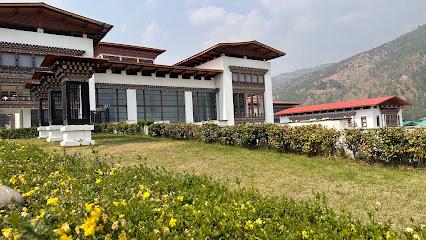
Paro Airport Bird's Eye View Point
Discover breathtaking panoramas at the Paro Airport Bird's Eye View Point, a scenic gem in Bhutan that captures the essence of Himalayan beauty.
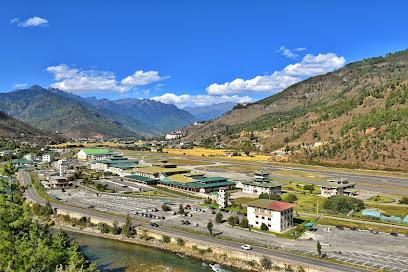
Centenary Farmers Market
Explore the Centenary Farmers Market in Thimphu for an authentic taste of Bhutanese culture, fresh produce, and unique handicrafts.
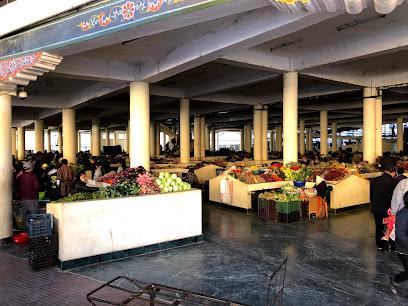
Chimi Lhakhang
Experience the spiritual serenity and cultural richness of Chimi Lhakhang, Bhutan's renowned Temple of Fertility set against a breathtaking backdrop.
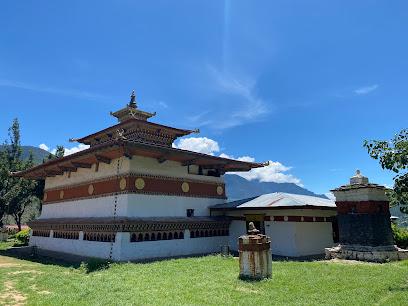
Kyichu Lhakhang སྐྱིད་ཆུ་ལྷ་ཁང་།
Explore the tranquility and cultural richness of Kyichu Lhakhang, one of Bhutan's oldest Buddhist temples, a must-visit for every traveler.
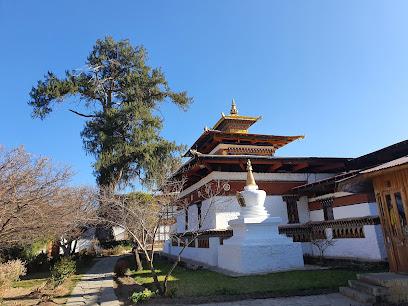
Mojo Park
Discover the lively Mojo Park in Thimphu, a vibrant live music bar and restaurant offering a unique blend of culture and entertainment in Bhutan.
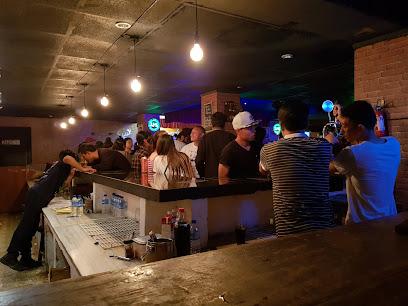
Tiger's Nest Hiking Trail
Experience the breathtaking beauty and spiritual allure of the Tiger's Nest Hiking Trail in Bhutan's stunning Himalayas.
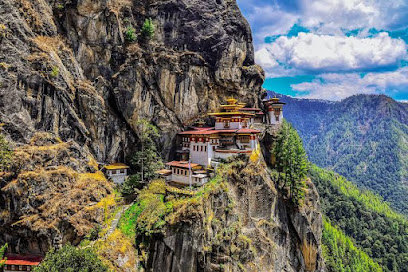
Essential places to dine
Mountain Cafe - Paro
Discover the flavors of Bhutan at Mountain Cafe in Paro - a perfect blend of local delicacies and international cuisine.
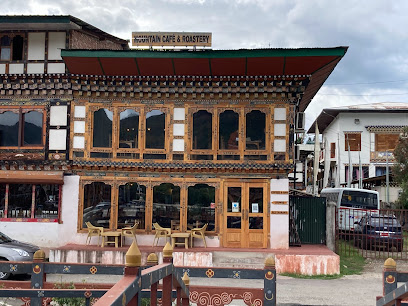
Sonam trophel restaurant
Experience authentic Bhutanese cuisine at Sonam Trophel Restaurant in Paro - a delightful blend of tradition and taste.
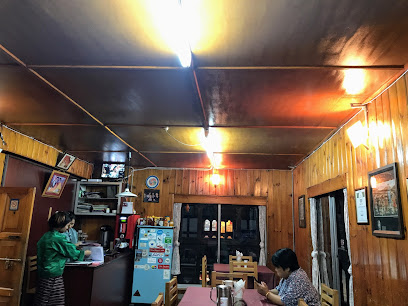
Namgay Artisanal Brewery
Experience authentic Bhutanese craftsmanship at Namgay Artisanal Brewery – where local ingredients meet traditional brewing methods.
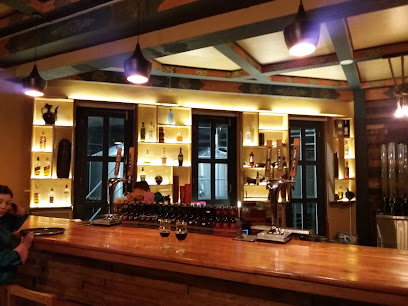
My Kind Of Place
Experience authentic Bhutanese flavors at My Kind Of Place in Paro - where every dish tells a story.
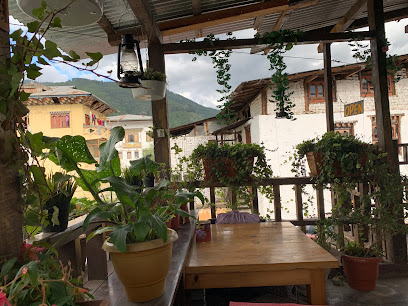
Authentic Pizza
Experience the true taste of Italy with locally sourced ingredients at Authentic Pizza in Paro – a culinary delight for every traveler.
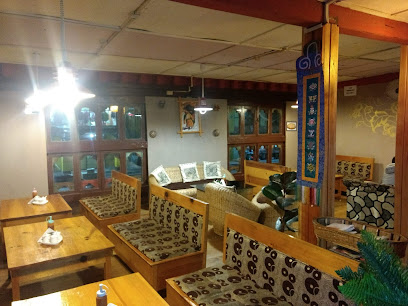
Taste Of Bhutan Restaurant And Bar
Discover authentic Bhutanese cuisine at Taste Of Bhutan Restaurant And Bar in Paro – where every bite is steeped in tradition and flavor.
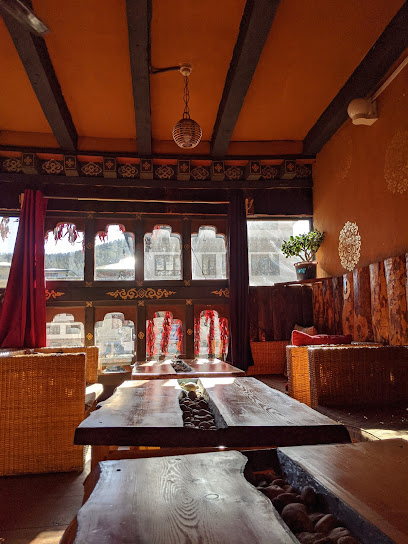
Tshering Farmhouse
Experience authentic Bhutanese cuisine in the heart of Paro Valley at Tshering Farmhouse.
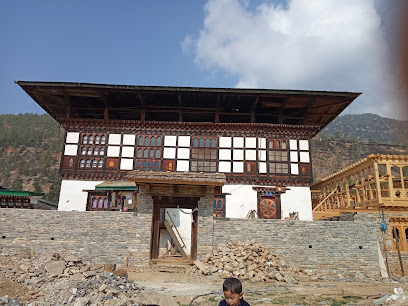
Airport Restaurant
Experience authentic Bhutanese flavors at Paro Airport Restaurant - where every dish tells a story.
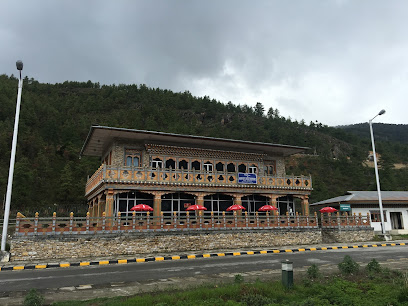
Momo Corner
Experience authentic Bhutanese cuisine at Momo Corner in Paro – home of delicious momos and traditional dishes.
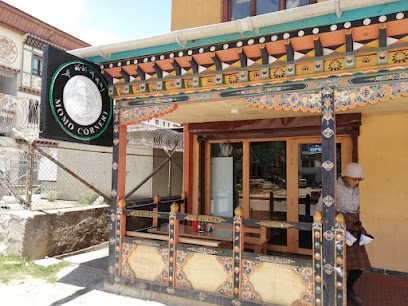
Kuzu Restaurant And Bar
Experience authentic Bhutanese cuisine at Kuzu Restaurant And Bar in Paro – where flavor meets tradition amidst stunning mountain views.
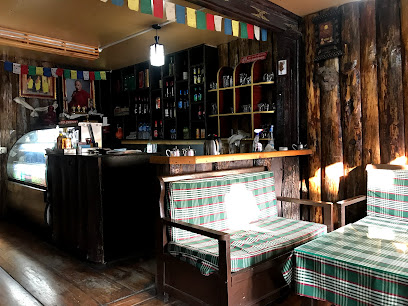
Phang-Guu Paro
Experience authentic Bhutanese flavors at Phang-Guu Paro - where tradition meets taste in the heart of picturesque Paro.
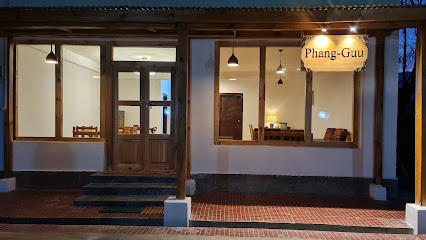
Yue-ling Restaurant
Discover authentic Bhutanese cuisine at Yue-ling Restaurant in Paro—where every dish tells a story.
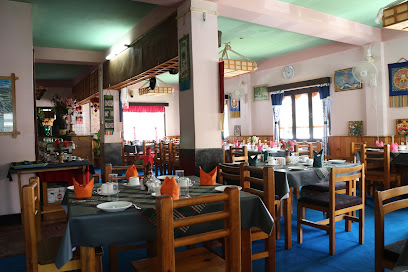
Tou Zaiga Restaurant by BIHT
Discover authentic Bhutanese flavors at Tou Zaiga Restaurant in Paro - where tradition meets taste in a serene setting.
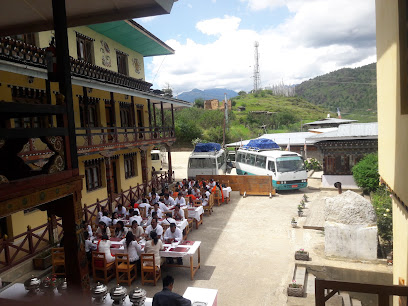
Nima restaurant and souvenir shop
Discover authentic Bhutanese cuisine and unique souvenirs at Nima Restaurant and Souvenir Shop in Paro.

Mountain Cafe
Experience the flavors of Bhutan at Mountain Cafe - your culinary stop at Paro International Airport.
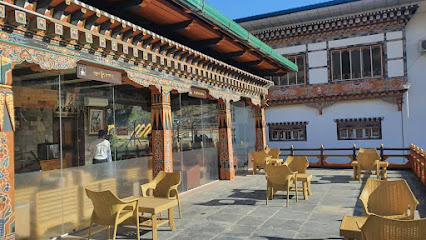
Markets, malls and hidden boutiques
Paro Town Shop No.12.Empty space for rent
Explore Paro Town's vibrant shopping scene with unique local crafts, textiles, and traditional Bhutanese souvenirs.
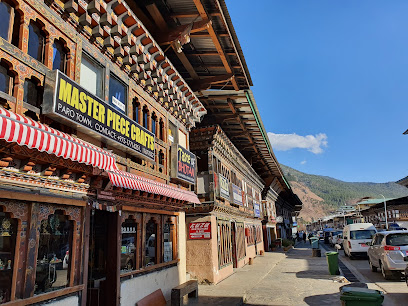
Paro Craft Market
Discover authentic Bhutanese crafts and unique souvenirs at Paro Craft Market, the heart of local shopping in Paro.
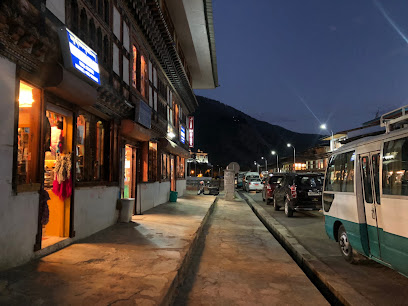
Miniso Bhutan Paro
Experience the blend of quality and affordability at Miniso Bhutan Paro, a vibrant shopping destination in the heart of Bhutan.
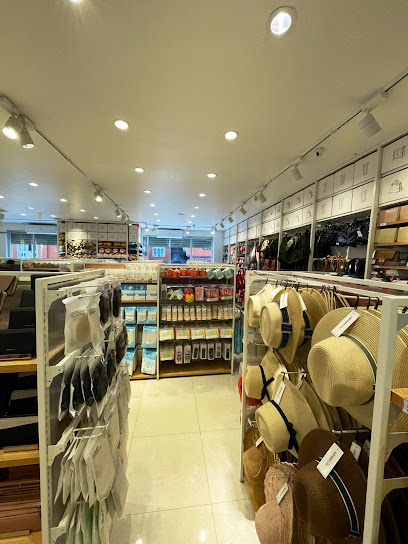
Bhutan made
Shop unique handcrafted souvenirs that embody the rich culture and craftsmanship of Bhutan at Bhutan Made in Paro.
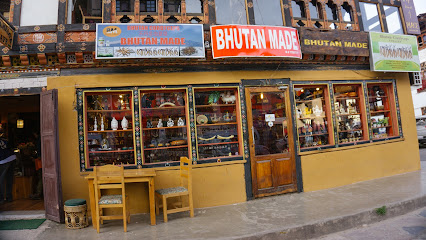
Bhutan Treasure Handicraft
Explore Bhutan Treasure Handicraft in Paro for unique, handcrafted souvenirs that embody the rich cultural heritage of Bhutan.
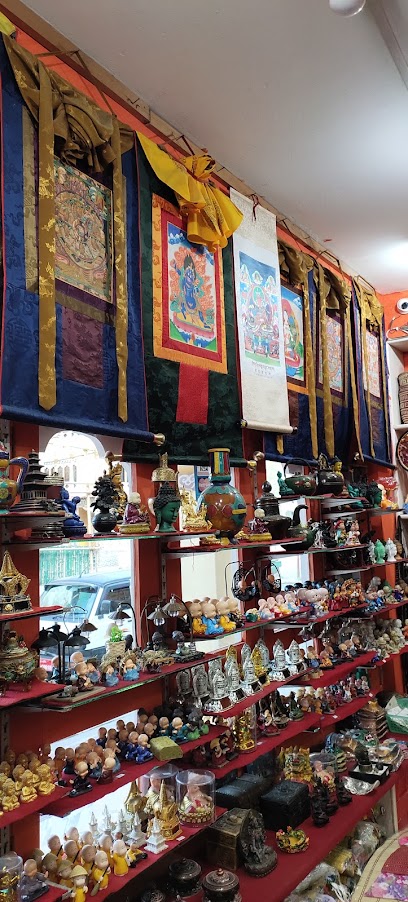
Pem Choden Handicraft
Explore Pem Choden Handicraft in Paro for authentic Bhutanese gifts, handcrafted treasures, and a unique cultural shopping experience.
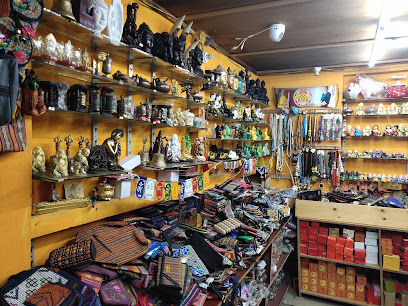
3 Little Monkeys
3 Little Monkeys in Paro offers a wide selection of affordable baby products, perfect for families exploring Bhutan together.
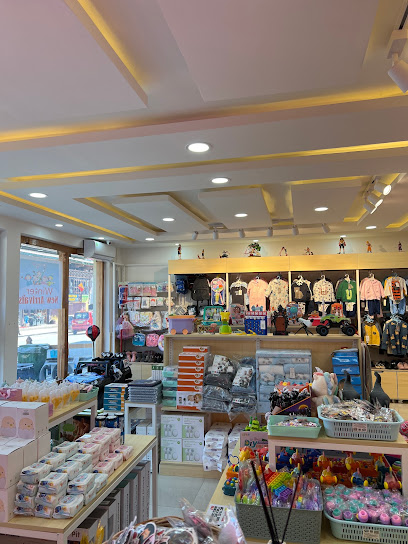
Paro CSI Market
Experience the heart of Bhutan at Paro CSI Market, where local crafts and delightful café moments await every traveler.
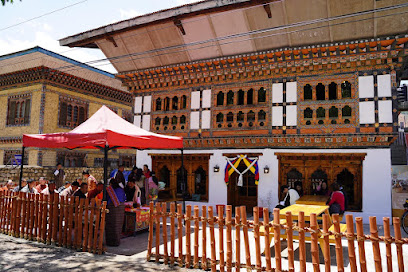
Bhutan Crafts
Explore the rich artistic heritage of Bhutan at Bhutan Crafts, a unique scrapbooking store in Paro offering handmade treasures and creative workshops.
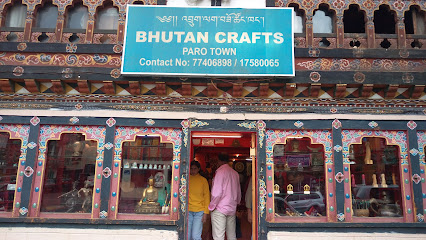
Om handicraft & Souverneirs,2nd phase, paro town,bhutan
Discover authentic Bhutanese souvenirs and handicrafts at Om Handicraft & Souvenirs in Paro, a vibrant shopping destination for cultural treasures.
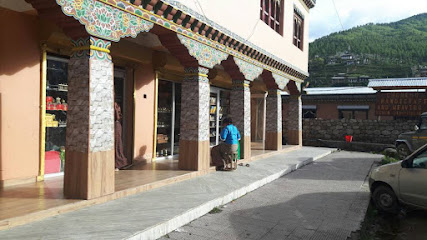
Yangki New Collection
Explore the vibrant world of footwear at Yangki New Collection in Paro, where tradition meets contemporary style in every step.
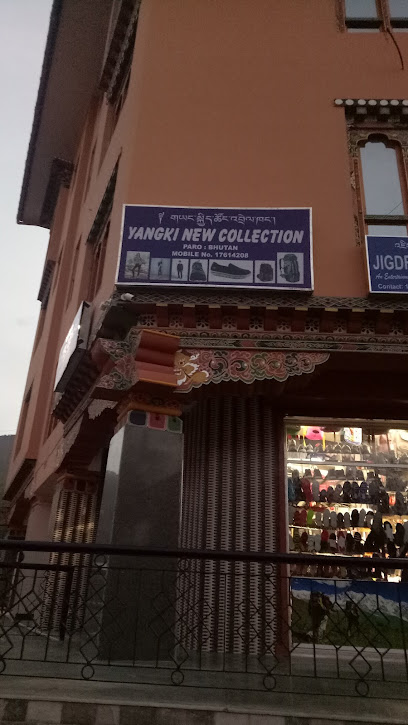
Walk-in Liquor Shop
Explore a delightful selection of wines and local spirits at the charming Walk-in Liquor Shop in Paro, your gateway to Bhutanese flavors.
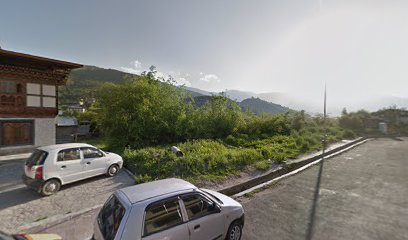
Bhutan Made - General Store
Explore Bhutan Made, a charming general store in Paro offering authentic Bhutanese crafts, local snacks, and unique souvenirs for a memorable shopping experience.
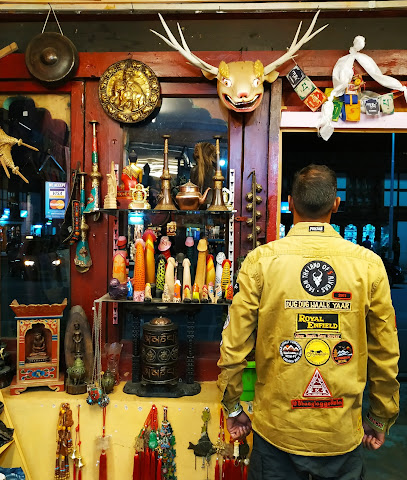
Tashi General Stores
Explore Tashi General Stores in Paro for unique clothing and local essentials, blending Bhutanese culture with quality shopping.

Rigter Enterprise
Discover Rigter Enterprise in Paro for unique stationery and local crafts reflecting Bhutan's vibrant culture. A must-visit for every traveler.
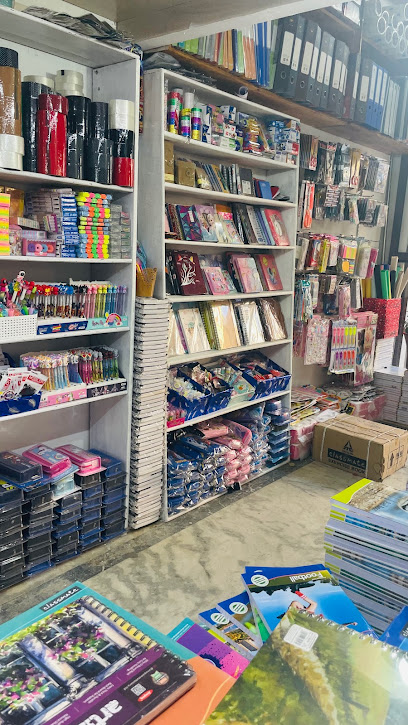
Essential bars & hidden hideouts
Mountain Cafe - Paro
Explore the flavors of Bhutan and beyond at Mountain Cafe in Paro, where every meal is a delightful experience.
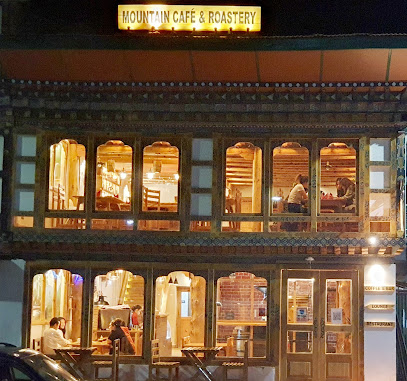
Namgay Artisanal Brewery
Discover the heart of Bhutanese brewing at Namgay Artisanal Brewery in Paro, where unique flavors and stunning scenery meet.
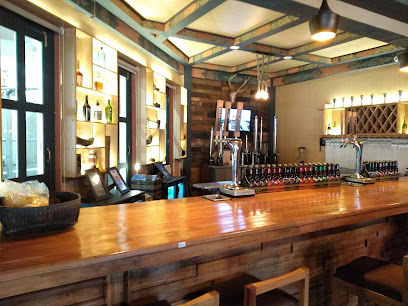
PARK 76 Cafe & Pub
Discover the lively ambiance and delicious fare at PARK 76 Cafe & Pub, a cultural hotspot in the heart of Paro, Bhutan, perfect for music lovers and foodies alike.

My Kind Of Place
Experience the essence of Bhutanese cuisine at My Kind Of Place in Paro, where every dish is a flavorful journey into local traditions.
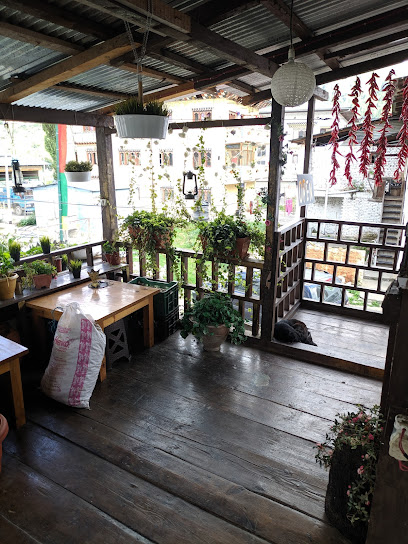
Taste Of Bhutan Restaurant And Bar
Experience the authentic flavors of Bhutan at Taste Of Bhutan Restaurant And Bar, a cozy dining spot in Paro showcasing traditional cuisine and local hospitality.
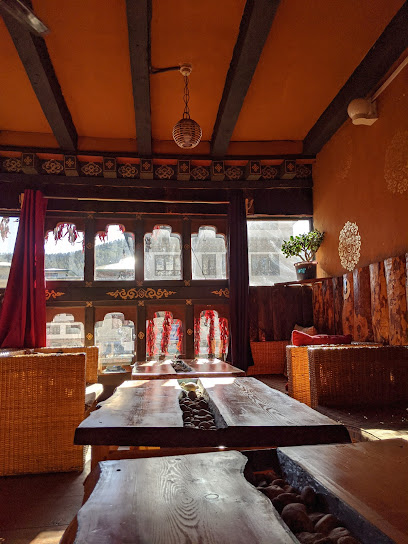
The Outcast Pub
Discover the lively atmosphere of The Outcast Pub in Paro, where travelers gather to enjoy local brews and share stories in a cozy setting.
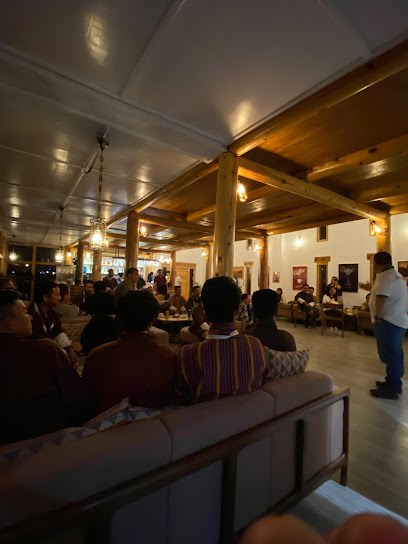
Jigdrel Karaoke
Unleash your inner superstar at Jigdrel Karaoke in Paro, Bhutan, where unforgettable nights of music and fun await.
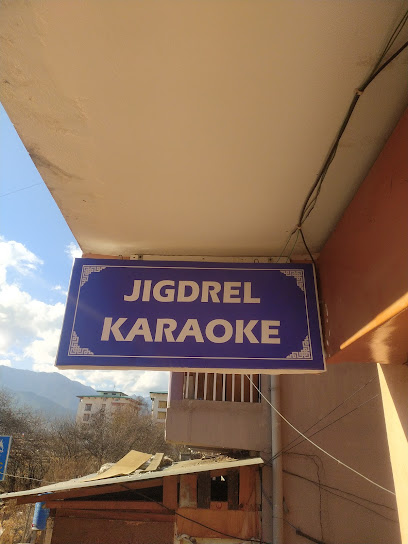
Numa Restaurant
Experience authentic Bhutanese cuisine at Numa Restaurant in Paro, where traditional flavors meet breathtaking views.
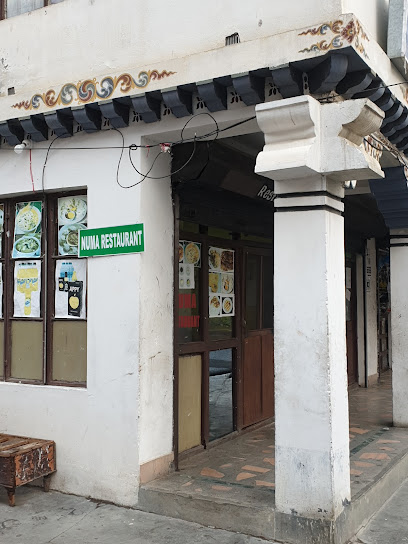
Paro Club
Discover the energetic vibe of Paro Club, a must-visit bar in Paro, offering a delightful selection of drinks and a lively atmosphere for socializing.
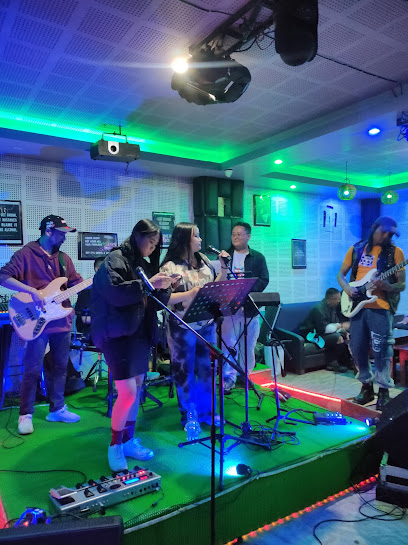
Roadside Bar & Kitchen
Experience the authentic tastes of Bhutan at the Roadside Bar & Kitchen, where local flavors meet a welcoming atmosphere in beautiful Paro.
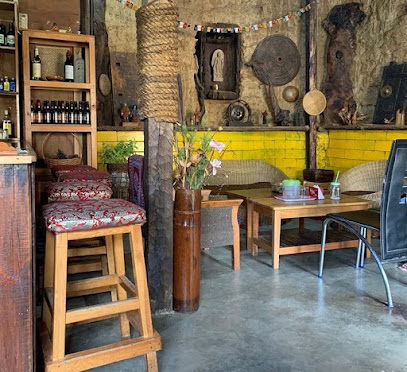
Drakuen Restaurant
Drakuen Restaurant in Paro offers a vibrant bar experience with local brews and a lively atmosphere perfect for unwinding after a day of exploration.

Zangmo restaurant
Discover the authentic flavors of Bhutan at Zangmo Restaurant in Paro, where traditional dishes meet warm hospitality.
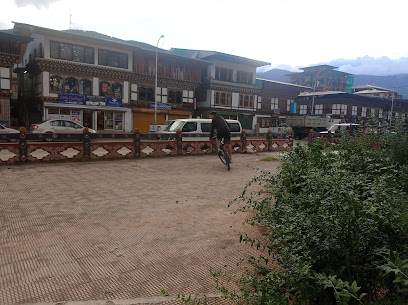
Airport Waiting Lounge
Experience ultimate relaxation at Paro's Airport Waiting Lounge, your serene escape before takeoff.
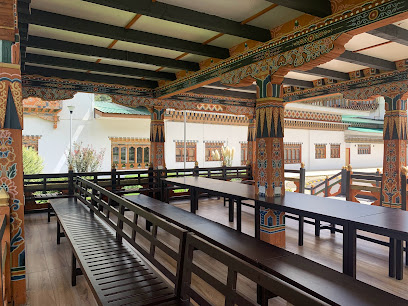
N D K karaoke
Experience the vibrant nightlife of Paro at N D K Karaoke, where locals and tourists come together to sing and celebrate in a lively atmosphere.

Oppa’s Pub
Experience the vibrant nightlife at Oppa’s Pub in Paro, where local culture meets a lively atmosphere and refreshing drinks await.
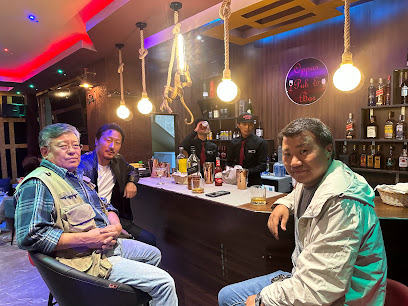
Local Phrases
-
- Helloཀླུ་ཤི་བ
[klu shi ba] - Goodbyeཞེན་ནས
[zhen na] - Yesགིས
[gi] - Noམེད
[me] - Please/You're welcomeཤིན་ཏུ་ར
[shin tu ra] - Thank youབཤགས་པ
[sha kha pa] - Excuse me/Sorryདཔལ་ངོས་བ
[pal ngos ba] - How are you?ཁྱེད་ར་རེད་ས་ལ་གཏིས་ས
[khe ra re sa la gati sa] - Fine. And you?སྣང་བས། ཁྱེད་ར་ལ
[nang ba, khe ra la] - Do you speak English?ཨིགས་ལི་ཁོང་ར་ལ་ན
[ig li kong ra la na] - I don't understandང་ཁོང་ར་མེད
[nga kong ra me]
- Helloཀླུ་ཤི་བ
-
- I'd like to see the menu, pleaseམེད་དུས་མཇུ
[me du menu] - I don't eat meatང་ལག་ཟང་ལ་མིས
[nga lak zang la mi] - Cheers!མུངས་བས
[mung ba] - I would like to pay, pleaseམེད་དུས་ཉིད
[me du nyi]
- I'd like to see the menu, pleaseམེད་དུས་མཇུ
-
- Help!གསོལ་འདས།
[sol da] - Go away!སྲེན་མས།
[sren ma] - Call the Police!གལ་གསོལ་མཇུ
[gal sol ju] - Call a doctor!སློབ་མཇུ
[lob ju] - I'm lostང་སྐོར
[nga kor] - I'm illང་སྨན
[nga men]
- Help!གསོལ་འདས།
-
- I'd like to buy...མེད་དུས་ཌ
[me du da] - I'm just lookingང་ལྟ་ཏུ།
[nga latu] - How much is it?སྐུ་ལ་ལས་མ་ལ་ཞོན་པ
[ku la la ma la zon pa] - That's too expensiveསྣང་མེད་ས
[nang me] - Can you lower the price?གཤས་སོག་ས་ཡོས་ད
[sha sog sa yo da]
- I'd like to buy...མེད་དུས་ཌ
-
- What time is it?མིག་མི། ལེགས་པ
[mik mi leg pa] - It's one o'clockམེད་འགོག་ལ
[me gok la] - Half past (10)སྡུམ་འགོག། ཕོ་གོ
[dum gok po go] - Morningཉི།
[nyi] - Afternoonསོ།
[so] - Eveningདགོངས་པ
[gong pa] - Yesterdayམཇུབ
[ju] - Todayད་ས
[da sa] - Tomorrowསྟེ
[te] - 1གཅིག
[gzig] - 2གཉིས
[nyi] - 3གསོ།
[so] - 4མོ།
[mo] - 5ལྔ
[nga] - 6དྲུང
[drung] - 7བདུད
[dud] - 8བར
[bar] - 9དགུ
[gu] - 10བཅུ
[chu]
- What time is it?མིག་མི། ལེགས་པ
-
- Where's a/the...?ནང་འཇུ...?
[nang ju] - What's the address?ལས་གོ་ནང་འཇུ...?
[la go nang ju] - Can you show me (on the map)?ང་བས་ཡོས་དག་འཇུ...?
[nga ba yo dag ju] - When's the next (bus)?ར་ཆག་ལས་སྡུམ་འཇུ...?
[ra chag la dum ju] - A ticket (to ....)སྡུམ་གི་ཡོས་དག་འཇུ...?
[dum gi yo dag ju]
- Where's a/the...?ནང་འཇུ...?
History of Paro
-
Paro, a picturesque valley town nestled in the heart of Bhutan, has a history that stretches back to ancient times. The region has been continuously inhabited since prehistoric periods, with archaeological evidence suggesting settlements dating back to 2000 BCE. The valley's fertile soil and strategic location made it an ideal spot for early communities.
-
Buddhism made its way to Paro in the 8th century, largely due to the influence of Guru Rinpoche, also known as Padmasambhava. According to legend, Guru Rinpoche flew to the site of the iconic Paro Taktsang (Tiger’s Nest Monastery) on the back of a tigress to subdue a local demon. This event marked the beginning of Buddhism's deep-rooted influence in the region.
-
Paro Dzong, also known as Rinpung Dzong, was constructed in 1646 under the orders of Zhabdrung Ngawang Namgyal, the unifier of Bhutan. This fortress-monastery served as a defense stronghold against Tibetan invasions and a center for religious and administrative activities. The dzong is a fine example of Bhutanese architecture, featuring massive walls and intricate woodwork.
-
The Battle of Paro in 1644 was a significant conflict between the forces of Zhabdrung Ngawang Namgyal and the Tibetan-Mongol army. The Bhutanese successfully defended their territory, and this victory solidified the region's autonomy and the authority of Zhabdrung Ngawang Namgyal. The battle is a key event in Bhutanese history, emphasizing the resilience and strategic prowess of the Bhutanese people.
-
Paro played a critical role in the unification of Bhutan in the 17th century. The region's strategic importance and its dzong's defensive capabilities were crucial in Zhabdrung Ngawang Namgyal's efforts to consolidate various warring fiefdoms into a unified nation. Paro's support and resources were instrumental in establishing a cohesive Bhutanese state.
-
In the 1960s, Bhutan began opening up to the outside world. Paro became a gateway for international visitors with the construction of Paro Airport in 1968, the only international airport in Bhutan. The town has since evolved into a vibrant hub for tourists, offering a unique blend of historical sites, cultural experiences, and natural beauty.
-
The Paro Tshechu, one of Bhutan's most vibrant and significant religious festivals, is held annually in the spring. This festival features mask dances, traditional music, and rituals performed by monks and laymen. The Tshechu commemorates the deeds of Guru Rinpoche and serves as a time for the community to come together in celebration and prayer.
Paro Essentials
-
Paro is home to Bhutan's only international airport, Paro Airport (PBH), which is serviced by Druk Air and Bhutan Airlines. Direct flights are available from several major cities including Bangkok, Delhi, Kathmandu, and Singapore. Visitors must book their trip through a licensed Bhutanese tour operator or an international partner to obtain a visa and arrange travel.
-
Once in Paro, local transportation options include taxis and buses. Taxis are readily available and can be hired for short trips or for the entire day. Public buses connect Paro to other parts of Bhutan, including the capital, Thimphu. Renting a car is not a common practice for tourists, as driving in Bhutan requires a local driver's license.
-
The official currency in Bhutan is the Ngultrum (BTN). Indian Rupees (INR) are also widely accepted, except for INR 500 and INR 2000 notes. Credit cards are accepted at major hotels and some shops, but cash is preferred, especially in rural areas. ATMs are available in Paro, but it is advisable to carry sufficient cash for your needs.
-
Paro is generally very safe for tourists. Violent crime is rare, and petty crime is infrequent. However, it's advisable to take standard precautions such as safeguarding your belongings and not venturing into isolated areas after dark. There are no specific high-crime areas targeting tourists.
-
In case of emergency, dial 113 for police assistance or 112 for medical emergencies. The main hospital in Paro is Paro District Hospital, which provides basic medical services. It is recommended to have travel insurance that covers medical emergencies and evacuation, as healthcare facilities can be limited.
-
Fashion: Do dress modestly. Avoid wearing revealing clothing, especially when visiting religious sites. Religion: Do show respect when visiting monasteries and temples. Remove shoes and cover your head when required. Public Transport: Do be patient and respectful. Buses can be crowded, so give up your seat to elderly passengers. Greetings: Do greet people with a slight bow or a handshake. Avoid physical contact with monks. Eating & Drinking: Do try local dishes like Ema Datshi. Don't refuse food or drink offered by locals, as it is considered impolite.
-
To experience Paro like a local, visit the weekend market where you can buy fresh produce and traditional Bhutanese crafts. Engage with locals; they are often friendly and willing to share insights about their culture and history. Don’t miss the Paro Tsechu, a vibrant annual festival featuring traditional mask dances and performances. For a unique experience, hike to the iconic Tiger's Nest Monastery, which offers breathtaking views of the Paro Valley.
Trending Landmark in Paro
-
Buddha Dordenma Statue སྟོན་པ་རྡོར་གདན་མ།
-
Paro Taktsang
-
National Museum of Bhutan འབྲུག་གི་འགྲེམས་སྟོན་ཁང་།
-
National Memorial Chhorten རྒྱལ་ཡོངས་རྗེས་དྲན་མཆོད་རྟེན།
-
Paro International Airport
-
Simply Bhutan
-
View Point and Shed, Chele La
-
Folk Heritage Museum Kawajangsa
-
Mountain Cafe - Paro
-
Rinpung Dzong རིན་སྤུང་རྫོང་།
-
Simtokha Dzong སེམས་རྟོགས་ཁ་རྫོང་།
-
Chele La
-
Paro Airport Bird's Eye View Point
-
Hotel Khamsum
-
Rema Resort
Nearby Cities to Paro
-
Things To Do in Thimphu
-
Things To Do in Wangdue Phodrang
-
Things To Do in Punakha
-
Things To Do in Phuentsholing
-
Things To Do in Gangtok
-
Things To Do in Trongsa
-
Things To Do in Darjeeling
-
Things To Do in Bumthang
-
Things To Do in Siliguri
-
Things To Do in Jakar
-
Things To Do in Mongar
-
Things To Do in Rangpur
-
Things To Do in Trashigang
-
Things To Do in Namche Bazaar
-
Things To Do in Guwahati










